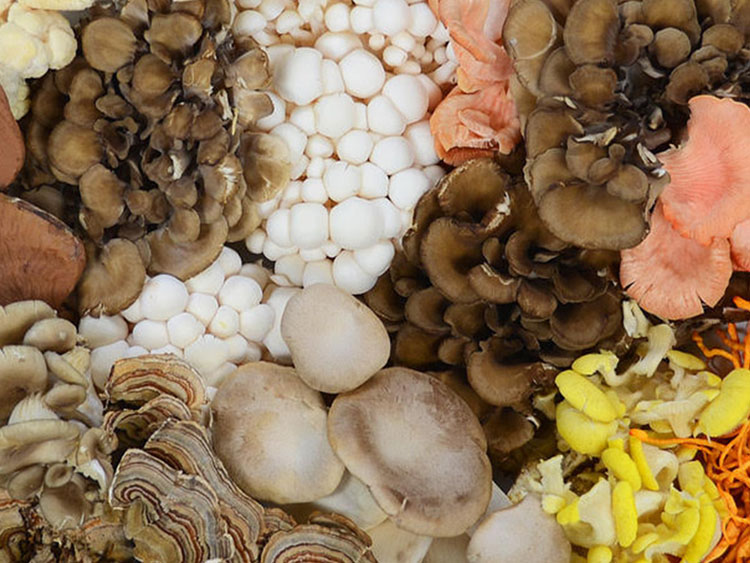Finished product testing ensures that products are safe, authentic and efficacious … and verifies batch-to-batch consistency.
This involves a variety of tests, including, genetic analyses to confirm the authenticity of each strain, microbiological assays to check for pathogens, chemical assessments to verify the presence and concentration of active compounds and to check for the absence of pollutants.
Much is still to be done to establish repeatable testing methods throughout such diverse species, states author Julie Daoust, Chief Scientific Officer, M2 Ingredients.
Current state of quality, safety and testing
The current state of quality, safety and testing in the mushroom supplement industry is a tapestry of sophisticated scientific methods and evolving regulations.
With increasing consumer demand for natural health products, the industry is striving to meet high expectations for quality and efficacy. Companies are investing in state-of-the-art laboratories and third-party certifications to ensure compliance with stringent global standards.
However, the industry still faces challenges in terms of standardising testing methods, which can lead to variability in product quality.
The call for transparency and uniform safety protocols is driving the adoption of more comprehensive testing regimes that encompass a holistic view of quality from farm to finished product.
Ensuring authenticity
Ensuring the authenticity of mushroom supplements is crucial in a market in which consumers are making decisions based on the perceived purity and origin of products.
DNA sequencing is commonplace to authenticate the strains of mushrooms. With the rise of sophisticated counterfeits, these methods are indispensable tools in a manufacturer’s arsenal to protect their brand and assure customers of their product's authenticity.
Combating adulteration and mislabelling in the industry
Adulteration and mislabelling are significant issues that the mushroom supplement industry is actively combating.
The American Herbal Product Association (AHPA) has issued labelling guidelines for mushroom products that encourage brands to declare growing substrate, any carriers used in extracts, fungal parts and species name to avoid consumers to be misled and potentially harm the industry’s reputation.
Implementing stringent testing protocols, educating suppliers and promoting supply chain transparency are all part of a multifaceted approach to combat these practices.
In addition, there is a growing emphasis on traceability, with companies increasingly adopting technologies to track the journey of a product from strain to supplement.
Post-harvest handling and its effects on mushroom quality
Post-harvest handling is a pivotal stage that can influence the quality of the final mushroom ingredients.
If mushrooms are grown outside or not processed in the same building where they are grown, proper handling includes prompt cooling and careful transportation to prevent the bruising and degradation of bioactive compounds.
Moreover, the post-harvest environment needs to be meticulously managed to ward off microbial contamination and enzymatic reactions that can diminish the mushroom's functional properties.
For supplement manufacturers, the post-harvest process demands as much attention as cultivation; it safeguards the intrinsic value of the mushroom until it can be stabilised by processing or drying.
Processing methods: maintaining efficacy
Preserving the integrity of bioactive compounds during processing is critical to maintain the efficacy of functional mushroom ingredients.
Various techniques — such as freeze-drying or low-heat air drying following a steam treatment — are employed to ensure that the bioactive molecules are not destroyed while safeguarding that the cell wall of the mushrooms are broken to improve their bioavailability.
Proper storage conditions, away from moisture, heat and light, are also vital to prevent the degradation of active compounds with time.
Extract versus whole mushroom
The debate between using mushroom extracts as opposed to whole mushrooms in supplements centres around the concentration and bioavailability of active compounds.
Both processes must include a way to break down the fungal cell walls to make bioactive compounds such as polysaccharides, polyphenols, alkaloids and terpenoids available.

To many consumers, the term “extract” denotes a higher concentration of the actives found in the mushroom. However, this process may not always offer the most efficacious finished product.
Often, a hot water extraction process is used by functional mushroom suppliers and results in only select water-soluble compounds being obtained from the mushroom.
This can work well for some bioactive molecules, depending on the desired application, but can result in a finished extract that’s devoid of other potentially important bioactive compounds.
Alternatively, an alcohol extraction process can be used that will concentrate different compounds … but only those that are soluble in alcohol. Whole mushroom ingredients, by contrast, offer the full spectrum of a mushroom's chemistry and include fibres and other nutrients that offer additional benefits.
The choice between extract and whole mushroom can be guided by the desired applications and functional benefit that the formulator seeks.
Importance of full chain of custody
Transparency throughout the supply chain is essential; it both ensures the quality and safety of the product but also builds trust with consumers.
By maintaining a full chain of custody, suppliers can quickly trace and address any issues that may arise, thereby upholding product integrity and protecting brand reputation.
Increasingly, consumer brands want the ability to visit and audit their supplier in person to better understand the process, as well as any quality and safety related programmes that support the integrity of their retail products.
As consumers seek products with a clear origin, transparency throughout the full chain of custody becomes an asset and helps vertically integrated manufacturers to demonstrate their commitment to quality and responsibility.
Conclusion: the future of mushroom supplements
The functional mushroom market is at the intersection of traditional use and modern science, with a growing body of research underscoring the potential health benefits of these remarkable fungi.
As manufacturers continue to advance the field with innovative technologies and sustainable practices, the importance of transparency and ethical responsibility cannot be overstated.
Maintaining the full chain of custody and dedication to preserving as much of the full spectrum of bioactive compounds are not just industry benchmarks, they are the pillars of consumer trust.
The path forward for functional mushrooms continues to expand, marked by an increasing understanding of the health benefits they can provide and an ever-deepening appreciation of mycology.
Each step forward in cultivation techniques, elucidation of the metabolome of these species, testing method development and sustainable practices helps to pave the way for functional mushroom products that provide support and can be delivered with the utmost integrity.
Access Part I of this article here.

